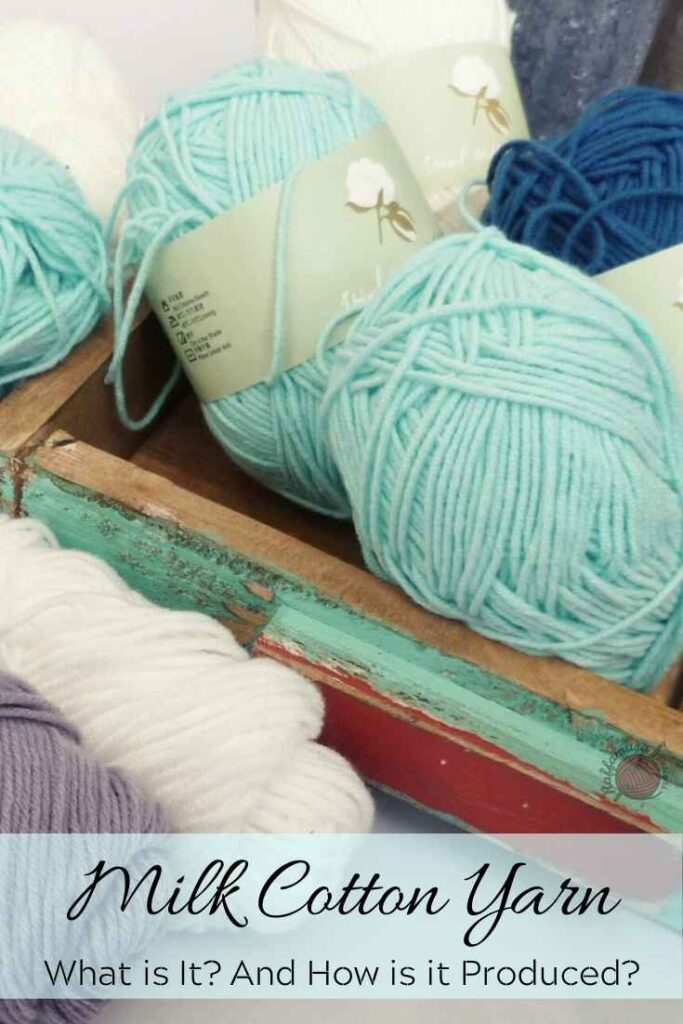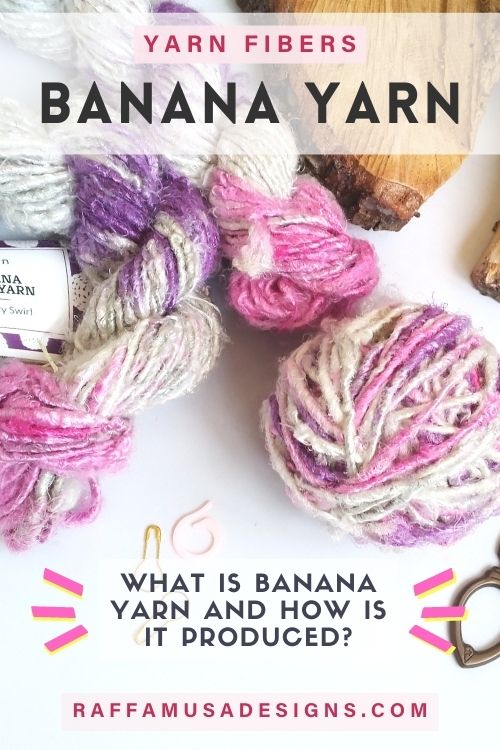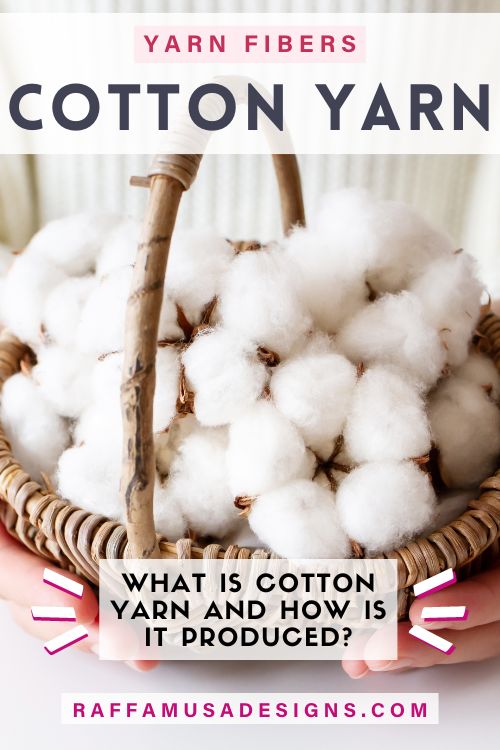From cotton crops to production of cotton yarn, and sustainability, learn everything you want to know about cotton yarn!
What is cotton?
Cotton is a plant-based fiber that makes soft, breathable, and durable textiles.
The plants that produce cotton are all part of the Gossypium genus of the Malvaceae family, and there are more than 50 species known in nature.
To be exact, cotton is not exactly a plant. It’s more like a shrub or bush, which grows in warm, dry places.
Cotton species are native to tropical and subtropical regions, including the Americas, Africa, Egypt, and India, with Mexico being the country with the highest number of wild cotton species (for more about the genetics of cotton see HERE).
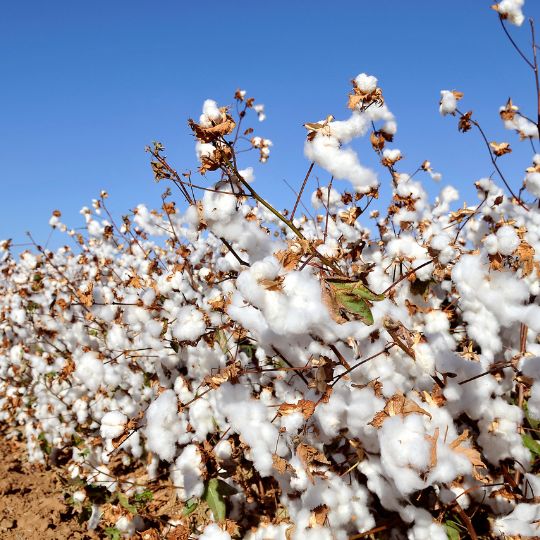
It takes about 5 months to go from seed to ripe plant.
When it’s ripe, the cotton plant produces some soft and fluffy bolls (a sort of protective case) filled with seeds.
The natural function of this white fluff is to improve the spreading of the seeds in the environment. However, we pick all the bolls up to make cotton fibers!
The composition of the boll is almost pure cellulose (91%), with water (7.85%) and minor percentages of pectins (0.55%), waxes and fats (0.4%), and minerals (0.2%).
Below, we’ll see how it’s possible to go from fluffy boll to cotton fiber. But first, let’s take a quick look at the etymology of the word cotton and a little historical background of this amazing fiber!
Etymology
The word “cotton” derives from the Arabic word qutn or qutun. There are mentions of these Arabic words already in medieval dictionaries as early as the 9th or 10th century.
Around the mid-12th century, Romance languages introduced the word cotton in Europe, and about a century later, English speakers started using it as well.
It’s interesting to notice how in chapter 2 of The Travels of Marco Polo (13th century), the Italian merchant and explorer talks about the Khotan region.
The Khotan region is in Turkestan, in today’s Xinjiang, and it was a place where cotton was grown in large amounts.
Cotton Throughout History
The use of cotton fabrics dates back to the 5th millennium BC.
It was possible to date cotton fabric to these early days of human civilization thanks to cotton fragments found in prehistoric sites in the Bolān Pass and in the Indus Valley civilization in South Asia, and Mexico and Peru in the Americas.
The first domestication of cotton plants probably happened around 5000 BC in eastern Sudan near the Middle Nile Basin region.
The ancient Romans used to import cotton from Egypt and other areas of production, but cotton was still rare in the Roman Empire.
In the Middle Ages, the introduction of handheld roller cotton gins from India in the 6th century, and the use of the spinning wheel from the Islamic world in the 11th century allowed to lower the price and increase the production volume of cotton.
Cotton became largely popular in England in the 1660s when the English East India Company (EIC) introduced calico and chintz cloth.
In the UK, the local woolen and linen producers could hardly compete with the cheap, imported cotton from India, until the Calico Act was passed in 1700, blocking the importation of cotton cloth.
However, the main consequence of the ban was the increase in the smuggling of cotton into the UK. So, a new addition to the Calico Act was passed in 1721 prohibiting the sale of most cotton, imported and domestic with the exception of Fustian and raw cotton.
The Calico Act was finally repealed in 1774, and the demand for raw cotton increased exponentially until the 1840s.
In the late 18th and early 19th centuries, Indian cotton was partially replaced by cotton produced in America and Egypt, which was cheaper (slaves worked for free…) and had better qualities because of the different characteristics of the cotton species growing in those areas.
The advent of the Industrial Revolution in Britain provided a great boost to cotton manufacture, as textiles emerged as Britain’s leading export.
Cotton fibers and textiles remained in high demand until the late 1960s, when the rapid uptake of polyester garments caused a sudden halt in cotton production in many countries, especially in Central America.
The production of cotton went back up in the 1970s, just to lower again in the early 1990s.
Cotton Yarn Manufacturing Process
The yarn manufacturing process is the conversion of raw cotton fibers into yarn suitable for many woven or knitted end-products and for sewing thread and cordage.
Currently, the world’s production of cotton is estimated at about 25 million tonnes or 110 million bales per year, taking up to 2.5% of the world’s arable land.
The largest producers of cotton are India and China, and the largest exporters of raw cotton are the US and Africa.
The basic production steps are:
Cotton Picking
The first step is to pick the cotton bolls either by hand or with the use of machines.
Once picked, the bolls get tightly packed together at high density to form cotton bales.
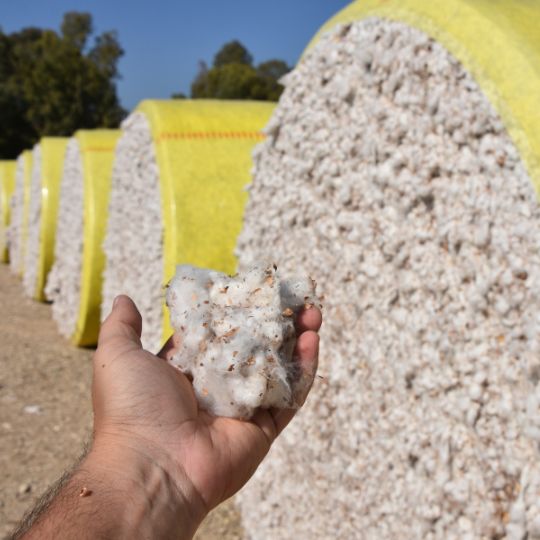
Opening and blending
At production sites, the cotton bales need to be opened up and separated again into small, fluffy tufts.
To do this, the bales are first opened. Then, the different layers of cotton are placed on a feeder machine with spiked teeth which moves them back and forth under a plucking mechanism.
Carding and combing
The next step in cotton production is carding, which performs most of the cleaning functions.
The carding machine has a series of cylinders and bars covered in wire. Its main function is to open up the cotton tufts, remove trash and other foreign matter, and produce the sliver. The sliver is a sort of rope used in the following steps.
After carding, the combing process provides a higher degree of cleanness by removing short fibers and impurities. After combing, the sliver is cleaner and shiny.
Drawing and roving
Drawing or drafting is the process of feeding the sliver into a series of rollers where each pair of rollers spins faster than the previous one. The main role of drawing is to:
- attenuating the loose fibers in the sliver;
- straightening the individual fibers;
- making the fibers more parallel to the axis of the sliver.
Parallelization of the fibers in the sliver is crucial for obtaining the desired properties of the future yarn.
The final stages of the drawing produce the finisher-drawing sliver, which has a diameter of about 1” (2.5 cm), and its weight per unit length is way too high to allow any drafting into yarn.
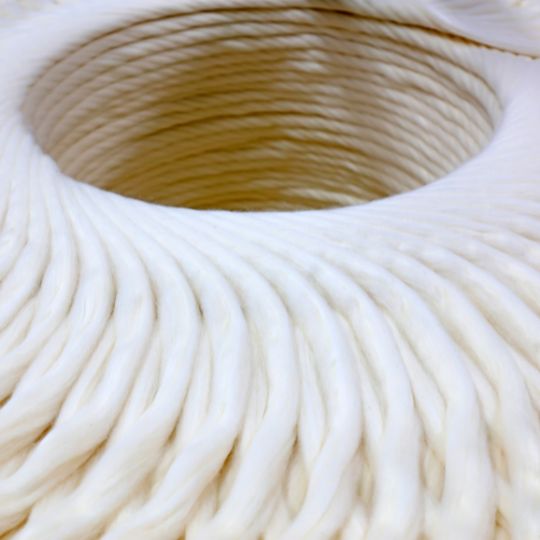
For this reason, in the following roving step, the diameter of the sliver is reduced to about 0.2” (0.5 cm), and the fibers are twisted by passing the bundle through a roving “flyer”.
The resulting product is called roving, and it is packed on a large bobbin ready for the next step.
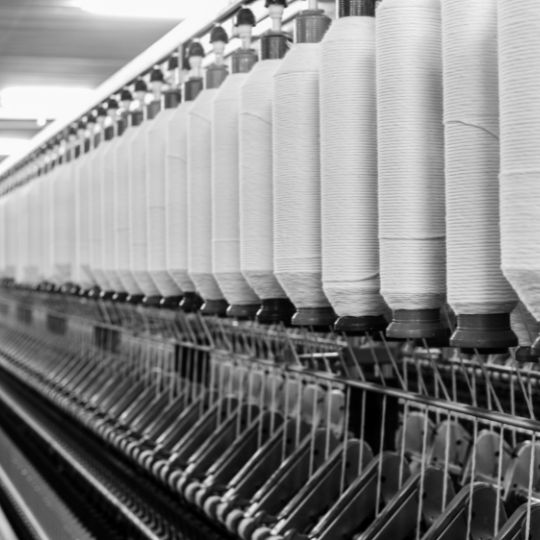
Spinning
Spinning is the process of drafting the roving into the desired yarn size, or count, and imparting the desired amount of twist.
The amount of twist is proportional to the yarn strength.
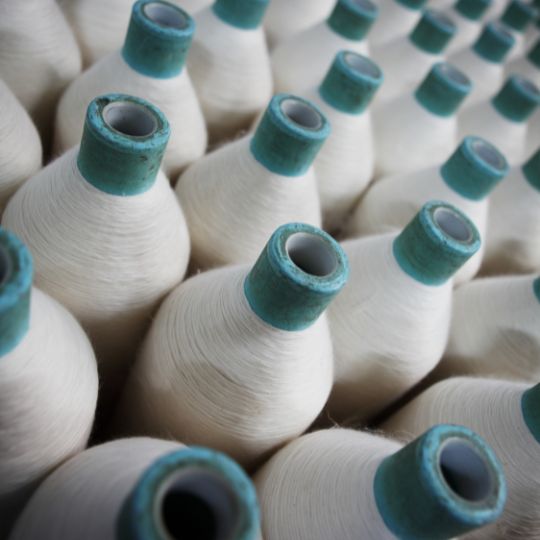
Winding and spooling
Finally, once the yarn is spun, it must be packaged in the correct way through winding, spooling, and twisting.
In general, spooling is used for warp yarns, i.e. those yarns that run lengthwise in woven fabric, and winding is used for filling or weft yarns, i.e. the yarns that run across the fabric.
Twisting is the process that makes ply yarn by twisting 2 or more strands of yarn together.
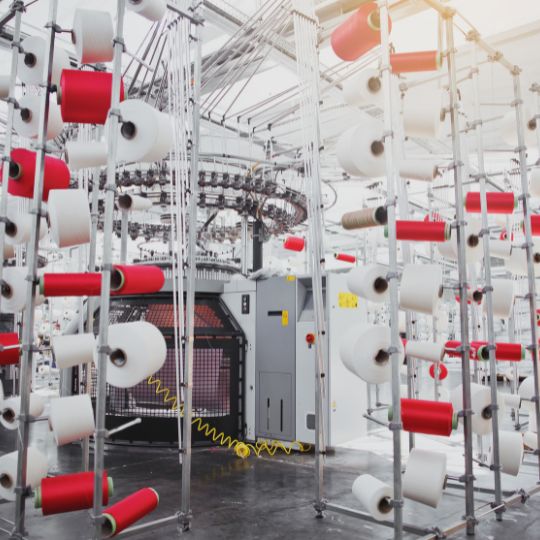
Sustainability of Cotton
Water Footprint
The water footprint of cotton fibers is one of the largest when it comes to plant fibers.
Water consumption already starts at the crop stage, with cotton being known as a thirsty crop. It is estimated that the consumption of water goes from about 8,000–10,000 liters per kilogram of cotton, up to 22,500 liters in dry areas.
Pests and Weeds
Cotton crops require a high amount of chemicals, including fertilizers, insecticides, and herbicides.
The main pests of cotton are bollworms, cotton stainers, chili thrips, cotton seed bugs, and defoliators fall armyworms.
For a complete list of cotton diseases, see HERE.
Genetic Modifications
Over the years, a genetically modified cotton variety, the Bt cotton, was developed allowing for a strong reduction in chemical consumption for cotton growth.
The Bt cotton is able to produce the Bt toxin, which is a natural-occurring toxin normally produced by the bacterium Bacillus thuringiensis (Bt).
This toxin is harmless to most forms of life but it is harmful to a small number of insects, including the larvae of moths and butterflies, beetles, and flies, which are some of the most pests of cotton crops.
When the cotton plant is engineered to produce the Bt toxin, farmers can use fewer amounts of broad-spectrum insecticides, which lowers the risk of resistance development.
Most importantly, the decreased use of insecticides also prevents the risk of killing natural insect predators in the farm ecology.
Even though Bt cotton contributes to non-insecticide pest management of cotton crops, it is still susceptible to many cotton pests, such as plant bugs, stink bugs, and aphids, and the real advantages over non-GM cotton are still debated.
Organic production
Most recently, a small number of producers are embracing an organic model of cotton production.
Organic cotton derives from plants that are not genetically modified and it is grown with a reduced amount of pesticides and only using non-synthetic fertilizers.
In the US, the National Organic Program (NOP) determines what are the allowed practices for pest control, growing, fertilizing, and handling of organic crops.
Competition from natural fibers
The high water demand for cotton crops and the need to use pesticides has opened the way to natural fiber alternatives.
One of the most popular alternatives to cotton is hemp. This cellulose fiber is considered a more sustainable yarn because the cultivation of hemp has a higher yield per acre and requires less water and pesticide use than cotton.
However, despite having similar characteristics, cellulose fiber alternatives still perform more poorly than cotton in several aspects, including their tensile strength and thermal regulation.
I hope you enjoyed reading this article and I would love to hear your thoughts! Feel free to leave a comment or share your ideas on Facebook or Instagram using the hashtag #raffamusadesigns
Find out more yarn fibers here on the blog…
